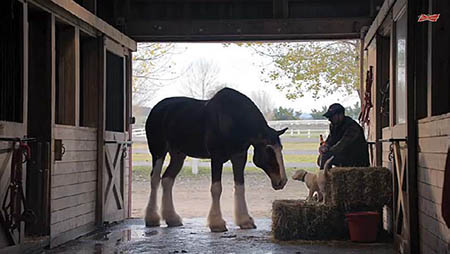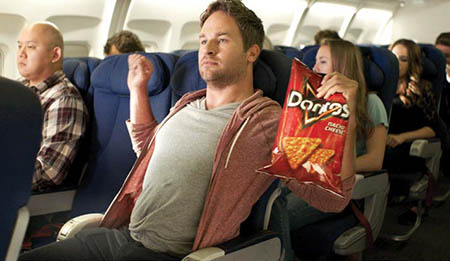Advertising Crowns the Super Bowl Experience

Jay Ankeney
Super Bowl XLIX on Feb. 1 was the most-watched, live event in the history of U.S. sports television with a record overnight rating of 49.7, up 4 percent over last year’s game. More than 116 million U.S. TV households gasped in disbelief as the New England Patriots stole the show from the Seattle Seahawks 28–24 in the final seconds.
For many, it’s the ads that really crown the Super Bowl experience. This year, costing $4.5 million for a 30-second spot (up from a mere $4 million last year), they did not disappoint. Significantly, however, this year continued the trend of that audience being spread over many more viewing platforms than just NBC’s broadcast.
NBC waived the log-in requirements of their Sports Live Extra Web streams, and although they were plagued with time delays, several apps let you small-screen the game on iPad, Windows 8.1 and Android tablets. NBC even sold separate commercials for their streams and blocked out some of the broadcast commercials if their sponsors didn’t want to pay twice. They even repeated paid spots to fill the gaps. (Imagine multiple Kardashian blurbs all through the game!) Still, CNN estimated that 1.3 million fans saw Malcolm Butler’s interception that won the game on a second screen.

Budweiser’s “Lost Dog” makes it home.
COMMERCIAL BREAK
It’s an “Ad, Ad, Ad, Ad,” world out there, with fake Super Bowl commercials and others supposedly “banned” from the official broadcast, filling cyberspace and TV chat shows for weeks before the game. After the dust had settled they were all available on a skillion Web sites, and this year most featured darned good video quality. Doritos even posted a whole series of “spoof” commercials on YouTube and many of them, especially their takeoff on Victoria’s Secret, are worth Googling.
Almost as ubiquitous as the websites showing Super Bowl spots are the sites gathering audience reaction. This year it was a pretty unanimous decision that Bud’s “Lost Dog” took top honors even if it had been somewhat overexposed before the game. That’s the thirteenth time in 15 years that furry, friendly and child-appealing animal ads selling booze have won USA Today’s Ad Meter’s ranking by a consumer panel of 6,703 voters.
The professional video industry's #1 source for news, trends and product and tech information. Sign up below.

Scott Zabielski
For its Super Bowl premiere, “Lost Dog” was seen at 13:57 into the second quarter, just after the Seahawks’ Jon Ryan had punted to the Patriots’ Julian Edelman for a two-yard run back. It’s a touching tale of a puppy (the good dog) trying to find his way back home, who is unexpectedly saved from a wolf (the bad dog) by a “Four Horsemen of the Apocalypse” image of charging Clydesdales. The creative agency behind it was Anomaly, and it was directed by RSA’s Jake Scott, and edited at White House Post in New York by Rick Lawley.
You probably know that the ad’s soundtrack features an evocative version of the song, “I’m Gonna Be (500 Miles)” by Sleeping at Last. And, it is well-reported that Don Jeanes repeated his role as the Clydesdale trainer, that there were actually eight yellow Labrador pups on the shoot—seven female, one male—all 11 weeks old, and seven Budweiser Clydesdales trained for three months to play their parts.
But, I doubt if you have been told that during the game, the world’s Clydesdale population increased by one at the Warm Springs Ranch in Missouri when a colt named “Arizona” (after the game’s venue) was foaled just minutes before the “Lost Dog” spot aired. Welcome to the Super World, Arizona.
‘MIDDLE SEAT’

Actor David Hoffman behaving poorly to induce people to pass by the open “Middle Seat” next to him in the Doritos commercial.
With 8:05 left before the half, the ad that produced the most “bang for its buck” interrupted my Super Bowl party. It was the winner of Dorito’s “Crash the Super Bowl” competition, a squeamish little vignette called “Middle Seat,” directed by Scott Zabielski and produced for a mere $2,000. For winning, this University of Southern California grad and current producer/director on Comedy Central’s “Tosh.0,” walked home with a cool $1 million prize.
“I wanted to play with the idea that if you wanted to be totally obnoxious, to keep someone from occupying the middle seat on an airplane, this was the way you would do it,” said Zabielski. “Everyone on the crew worked for free, all the equipment was donated, and we were able to use an aircraft interior set courtesy of Air Hollywood out in Pacoima.”
Zabielski had four hours to shoot the whole spot, and I’m not going to spoil the ending for all of the three people out there who have not seen it yet since it depends on a visual gag. It’s enough to say the spot involves actor David Hoffman behaving like a real pig to induce people to pass by the open seat next to him.
“We shot the spot in 2K with an Arri Amira, and it was edited on Final Cut 7 by Chris McKinley,” said Zabielski. “The greatest challenge, besides the shooting schedule, was finding the right music from the royalty-free selection Doritos provided. But after several tries, we found a track that worked really well.”
As much as I admire “Middle Seat,” the Super Bowl ad that most caught this editor’s eye was the mini epic “The Fiat 500X Blue Pill,” which aired just before halftime. It was actually a new version of a video previously shown all last year at auto shows.
The spot opens with wide shots of an Italian hillside town glowing with an ambiance worthy of a Mastroianni romance. We know we are in for the sweet vintage of geezer sex when an elderly woman entices an old man to bed. Delighted, he tries to pop a familiar-looking blue pill into his mouth—and misses. The pill flies out the window; ping-pongs across rooftops; ricochets off a wind vane; and clatters down a rain pipe that dumps it squarely into the fuel intake of a red FIAT 500X being filled at an Italian petrol station. The gas tank suddenly bulges up, much to the delight of some passing Italian women.
The ad, created by The Richards Group in Dallas, was edited by David Canright on an Avid Media Composer at the Charley Uniform Tango (“CUT,” get it?) facility. Surprisingly, Canright tells us that the careening aerial dance of the blue pill was mostly devoid of CG enhancement.
“We actually put the pill’s journey together by shooting it out of blow guns or firing it from a sling shot,” Canright said. “That gave the pill a far more realistic trajectory than we could achieve with digital artistry.”
Even the cats on the rooftops are real. “The town’s citizens were good enough to let us shoot on top of their houses, and the cats just kept wandering by,” said Canright. “So we included them. Only the overhead shot of the pill falling down directly on a FIAT 500X was created in a computer so we could vary the speed of its descent.”
Thanks to all the online servers storing them, the ads of Super Bowl XLIX will enjoy a long half-life in cyberspace. Next year I’m sure they will be bigger, better, more expensive and just like this year’s, boasting content that has very little to do with the product they are pitching. It’s all about brand identity, and Super Bowl ads have become a brand in themselves.
Jay Ankeney is a freelance editor and post-production consultant based in Los Angeles. Write him atJayAnkeney@mac.com.
